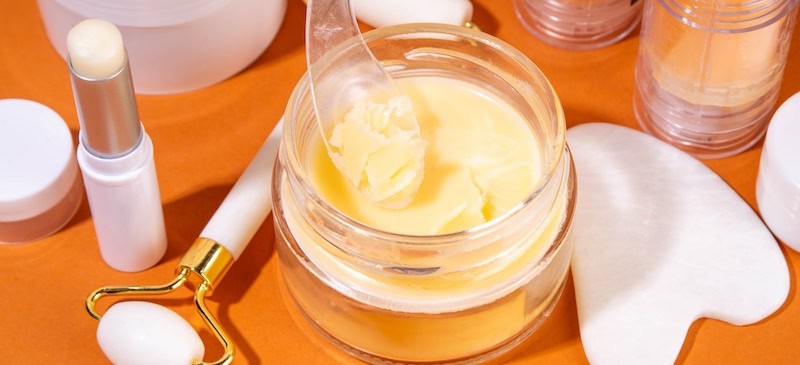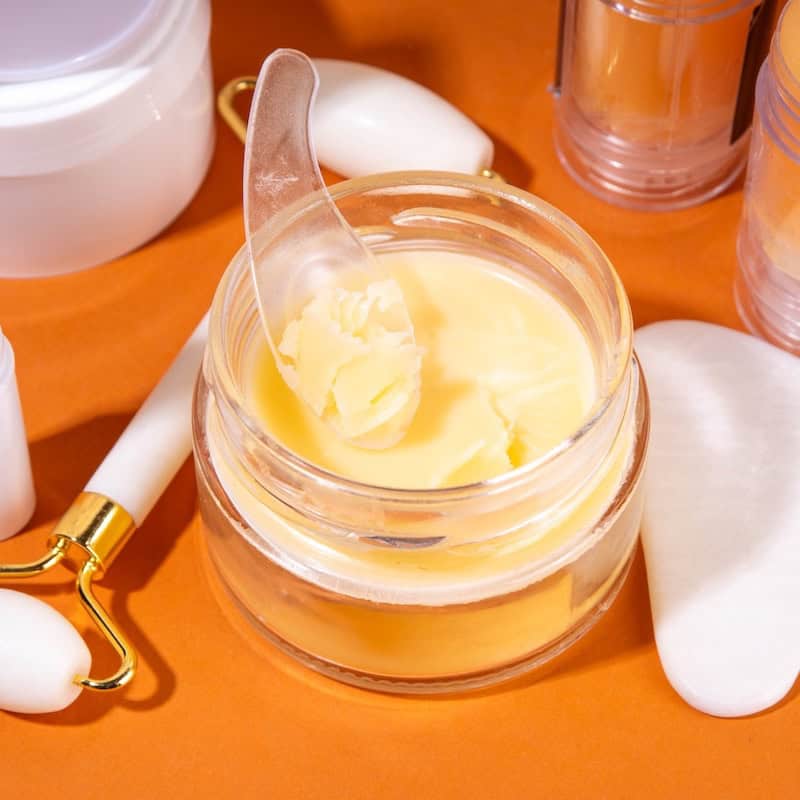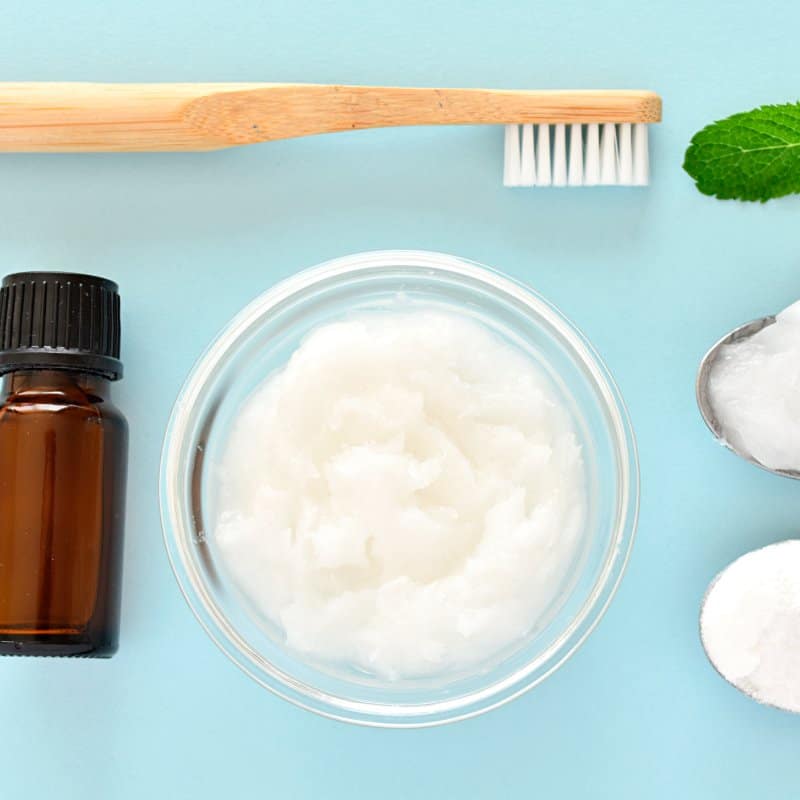This Dr. Axe content is medically reviewed or fact checked to ensure factually accurate information.
With strict editorial sourcing guidelines, we only link to academic research institutions, reputable media sites and, when research is available, medically peer-reviewed studies. Note that the numbers in parentheses (1, 2, etc.) are clickable links to these studies.
The information in our articles is NOT intended to replace a one-on-one relationship with a qualified health care professional and is not intended as medical advice.
This article is based on scientific evidence, written by experts and fact checked by our trained editorial staff. Note that the numbers in parentheses (1, 2, etc.) are clickable links to medically peer-reviewed studies.
Our team includes licensed nutritionists and dietitians, certified health education specialists, as well as certified strength and conditioning specialists, personal trainers and corrective exercise specialists. Our team aims to be not only thorough with its research, but also objective and unbiased.
The information in our articles is NOT intended to replace a one-on-one relationship with a qualified health care professional and is not intended as medical advice.
Beef Tallow for Skin: Benefits, How to Use It and Why It’s Making a Comeback
June 20, 2025

Beef tallow for skin is gaining popularity in natural skin care circles, and for good reason. Once a traditional skin care staple, beef tallow is making a strong comeback thanks to its skin-nourishing properties and compatibility with human biology.
Are you wondering, “Is beef tallow good for skin?” or “Why is beef tallow good for your skin?” This guide breaks down the facts. So let’s explore the benefits of beef tallow for skin, how to use it, risks to consider and even how to make your own tallow-based skin care product at home.
What is beef tallow for skin?
Beef tallow is rendered fat from cows, typically sourced from the suet (fat around the kidneys and loins). When purified properly, it becomes a clean, shelf-stable balm that resembles a thick lotion or cream.
When we talk about beef tallow for skin, we’re referring to its use as a moisturizer, skin barrier repair agent, or healing balm, often mixed with essential oils or herbal infusions to enhance its effects.
Beef tallow is biologically similar to the sebum our skin naturally produces, making it an ideal, non-toxic alternative to many synthetic skin care products.
Beef tallow for skin has exploded on TikTok and Instagram recently, with influencers and holistic skin care enthusiasts claiming it cured everything from dry skin to eczema. Videos often show users applying whipped tallow balms and raving about smoother, clearer skin in just a few days.
This viral trend has made many ask, “What is beef tallow for skin, and does it really work?”
While social media has helped shine a light on this ancestral skin care remedy, it’s important to distinguish hype from reality. Many dermatologists remain cautious due to the lack of large-scale clinical trials, but anecdotal evidence continues to fuel its popularity online.
Benefits
If you’re researching beef tallow benefits for skin, here’s why many people are turning to this natural moisturizer:
1. Deep, long-lasting moisturization
Beef tallow is rich in fat-soluble vitamins (such as A, D, E and K), which penetrate deep into the skin to hydrate and nourish from within. It also is incredibly rich in saturated fats and triglycerides that closely resemble those found in our skin.
These lipids form a breathable barrier that seals in moisture while allowing the skin to function normally. Unlike water-based lotions that evaporate quickly, tallow deeply hydrates and keeps skin soft and supple for hours.
2. Bio-compatibility with human skin
Tallow closely mimics human sebum, making it easily absorbed and less likely to clog pores. This helps maintain a healthy moisture barrier.
Because tallow’s fatty acid profile resembles sebum, it blends naturally into the skin’s barrier. This makes it suitable for most skin types and allows it to be absorbed easily without leaving a greasy residue.
This compatibility may reduce the risk of irritation that synthetic products sometimes cause.
3. Packed with skin-nourishing vitamins
Beef tallow is naturally rich in fat-soluble vitamins that support glowing, resilient skin, such as:
- Vitamin A: Supports cell turnover and regeneration and helps prevent dry, flaky skin.
- Vitamin D: Aids in skin repair, plays a role in immune function and may help calm inflammatory conditions.
- Vitamin E: A powerful antioxidant that protects skin cells from oxidative stress and combats the signs of aging.
- Vitamin K: May support skin elasticity and reduce dark circles under the eyes.
4. Anti-inflammatory and antibacterial properties
Beef tallow has natural antimicrobial and anti-inflammatory effects, which can help soothe eczema, psoriasis and other irritated skin conditions.
For instance, a 2024 review analyzed 19 studies involving tallow applied to human skin. The review found that tallow is composed primarily of oleic, palmitic and stearic acids, which increase the skin’s fatty acid concentration and support hydration.
Moreover, it noted therapeutic effects, such as relief in dermatitis, psoriasis, dry skin and wound healing, suggesting anti-inflammatory and antimicrobial benefits in humans.
While this scoping review consolidates evidence from human trials and observational studies, it also emphasizes the need for more rigorous clinical trials. Still, it remains the most substantial human-patient work available on beef tallow’s skin properties to date.
5. Promotes skin elasticity and smoothness
The unique lipid profile of beef tallow helps improve skin texture, elasticity and softness, making it ideal for dry, aging or damaged skin. The nourishing fats in tallow help maintain collagen structure and promote firmer, more elastic skin.
With regular use, users report a smoother texture and a reduction in the appearance of fine lines.
6. Soothes and protects irritated skin
Tallow has anti-inflammatory and antimicrobial properties that can be helpful for conditions like eczema, psoriasis and dermatitis. It supports the skin’s natural healing process and provides relief for cracked or itchy patches.
A study with 78 participants evaluated a topical emulsion primarily made of tallow combined with walnut oil. In individuals with atopic dermatitis and psoriasis, this emulsion:
- Increased skin hydration
- Moisturized effectively
- Functioned as a disinfectant, helping soothe irritated skin by reducing microbial irritation
7. Free of harsh additives
Pure beef tallow contains no synthetic fragrances, parabens or preservatives, making it a safer choice for sensitive skin types or those seeking a minimalist skin care routine.
8. Environmentally friendly and sustainable
When sourced from grass-fed beef, tallow is a byproduct of the meat industry that would otherwise go to waste. Using it for skin care is an eco-conscious option compared to petroleum-derived lotions.
Risks and side effects
Although beef tallow is generally safe, here are a few considerations before applying it to your skin:
- Sourcing matters: Choose grass-fed, organic beef tallow to avoid harmful residues, like antibiotics or hormones.
- Comedogenic potential: While it’s typically non-comedogenic, very oily or acne-prone skin types may react differently.
- Allergic reactions: Although rare, some individuals may have sensitivities or allergies. Patch test before full use.
- Scent: Pure tallow has a mild, meaty scent. It can be masked with essential oils but may not appeal to everyone.
Here’s more on the potential risks and side effects of beef tallow for skin:
1. Breakouts (acne)
Although beef tallow is often considered non-comedogenic, some individuals, especially those with very oily or acne-prone skin, may experience clogged pores or breakouts. This can happen if tallow is applied too thickly or mixed with other heavy oils.
2. Sunburn sensitivity
Beef tallow does not contain any sun protection factor (SPF). Some users may mistakenly believe it protects the skin like barrier creams do, but it offers no UV protection.
Applying tallow before sun exposure may even increase the risk of sunburn if it traps heat or interferes with other sunscreen products.
3. Potential interactions
Tallow may interact with active skin care ingredients, like retinoids, AHAs/BHAs or prescription treatments. Using tallow on top of these products may reduce their effectiveness or cause irritation.
Consult a dermatologist if combining tallow with a medical skin care routine.
4. Scent and texture issues
Some users are put off by the natural scent of unrefined tallow. Others may dislike its rich, balm-like consistency, especially in warm climates.
5. Quality and contamination
Poorly rendered or low-quality tallow (from grain-fed, non-organic sources) may contain residues like hormones, antibiotics or bacteria. Always choose 100 percent grass-fed, purified beef tallow for skin care use.
How to use
Looking for the best beef tallow for skin? Whether store-bought or homemade, here’s how to use it effectively:
1. As a daily moisturizer
Apply a small amount of beef tallow to clean, damp skin, preferably after bathing, to lock in moisture. A pea-sized amount is usually enough. Warm it between your fingers before massaging it in for best absorption.
2. Healing balm for cracked or irritated skin
Use beef tallow as a spot treatment for dry patches, eczema patches, dry elbows, cracked heels or minor wounds. It helps soothe and accelerate healing. Beef tallow for skin also helps restore moisture and reduce inflammation.
3. Makeup remover
Tallow’s emollient texture breaks down makeup and impurities while nourishing the skin barrier. Massage it onto your face to dissolve makeup, and then wipe it clean with a warm, damp cloth.
4. Anti-aging night cream or lip balm
Thanks to its vitamin-rich profile, beef tallow works well as an overnight skin renewal treatment. Use a thin layer at night for intensive skin repair. It also works wonders on chapped lips.
How to make beef tallow for skin
If you want to DIY your skin care, here’s a quick way to make beef tallow balm at home:
Ingredients:
- 1 cup grass-fed beef suet (trimmed fat)
- Optional: 1 tablespoon jojoba oil or olive oil for smoother texture
- Optional: A few drops of lavender or frankincense essential oil
Instructions:
- Chop suet into small pieces.
- Slowly render in a crockpot or stovetop on low heat until fully melted.
- Strain through cheesecloth to remove solids.
- Mix in optional oils once slightly cooled.
- Pour into jars and let solidify. Store at room temp or in the fridge.
This balm can be used as your all-purpose face and body moisturizer.
Frequently asked questions
Is beef tallow good for your skin?
Yes. Its nutrient density and skin compatibility make it one of the most effective and natural moisturizers available. It’s highly nourishing, deeply moisturizing and supports skin repair, especially when sourced from grass-fed animals.
What does beef tallow do for skin?
It moisturizes, heals, strengthens the skin barrier and provides anti-aging nutrients. Beef tallow for skin also hydrates, softens, reduces inflammation and delivers essential vitamins that promote healthy, glowing skin.
What is the best beef tallow for skin?
Look for 100 percent grass-fed, organic and purified tallow, ideally without added preservatives or artificial fragrances. Whipped or balmed versions may be more user-friendly.
Can beef tallow cause breakouts?
It’s possible, especially for those with oily or acne-prone skin. While it’s typically considered non-comedogenic, those with very oily or acne-prone skin should patch test first.
Why is beef tallow good for your skin?
It contains fat-soluble vitamins and closely resembles the skin’s natural oils, making it highly nourishing and healing.
Why are people putting beef tallow on their skin?
People are using beef tallow because it offers deep hydration, mimics the skin’s natural oils, and is packed with nutrients that can help with dryness, irritation and inflammation, especially in response to interest fueled by viral TikTok videos and natural skin care trends.
People are embracing beef tallow for its simplicity, nutrient density and compatibility with natural skin care routines as well, fueled in part by influencer claims about its healing benefits.
Why do dermatologists not like beef tallow?
Many dermatologists are hesitant to recommend tallow due to its lack of regulation, potential for comedogenic effects in some skin types and the absence of large-scale clinical studies. There’s also concern over the risk of contamination or improper rendering in homemade formulas.
Dermatologists may be skeptical due to the lack of clinical studies, the potential for clogged pores, and inconsistent product quality across DIY and boutique brands.
What are the disadvantages of tallow for skin?
Disadvantages may include a greasy texture, potential for pore-clogging in acne-prone skin, an unappealing natural scent and variability in quality if not sourced properly. Other potential downsides include a greasy feel, possible breakouts, lack of SPF and interactions with active skin care ingredients.
What can you use to hydrate skin instead of beef tallow?
Alternatives include shea butter, jojoba oil, squalane, aloe vera gel and glycerin-based moisturizers, each offering hydration with its own skin benefits and lighter textures. Here is what some alternatives can be useful for:
- Shea butter – Nourishing and anti-inflammatory
- Squalane – Lightweight and non-greasy
- Jojoba oil – Mimics skin’s sebum
- Aloe vera gel – Cooling and hydrating
- Hyaluronic acid – Attracts moisture into the skin
Conclusion
- Beef tallow for skin is a time-tested, nutrient-dense moisturizer that’s making a well-deserved comeback in clean beauty. From TikTok trends to ancient traditions, its rising popularity reflects a growing desire for simple, effective and natural solutions.
- Whether you’re looking for a natural solution for dry skin, a gentle anti-aging cream or just curious about ancestral skin care practices, beef tallow may be worth a try, as this time-honored remedy once again is making waves in the world of holistic skin care.
- When sourced responsibly and used properly, beef tallow offers a simple yet powerful way to nourish your skin, naturally and effectively. It can help hydrate, repair and protect your skin like few other ingredients can.
- If you’re still wondering “What is beef tallow for skin?” or “Is beef tallow good for your skin?” … the answer is a resounding yes.
- Give your skin the age-old care it deserves. Just be mindful of your skin type, the quality of your product and the science (or lack thereof) behind the latest viral trends.
- And beware, it’s not necessarily right for everyone, so know your skin type, start slow and always listen to your skin’s response.









